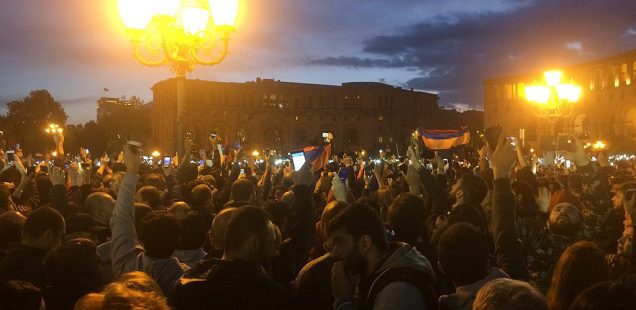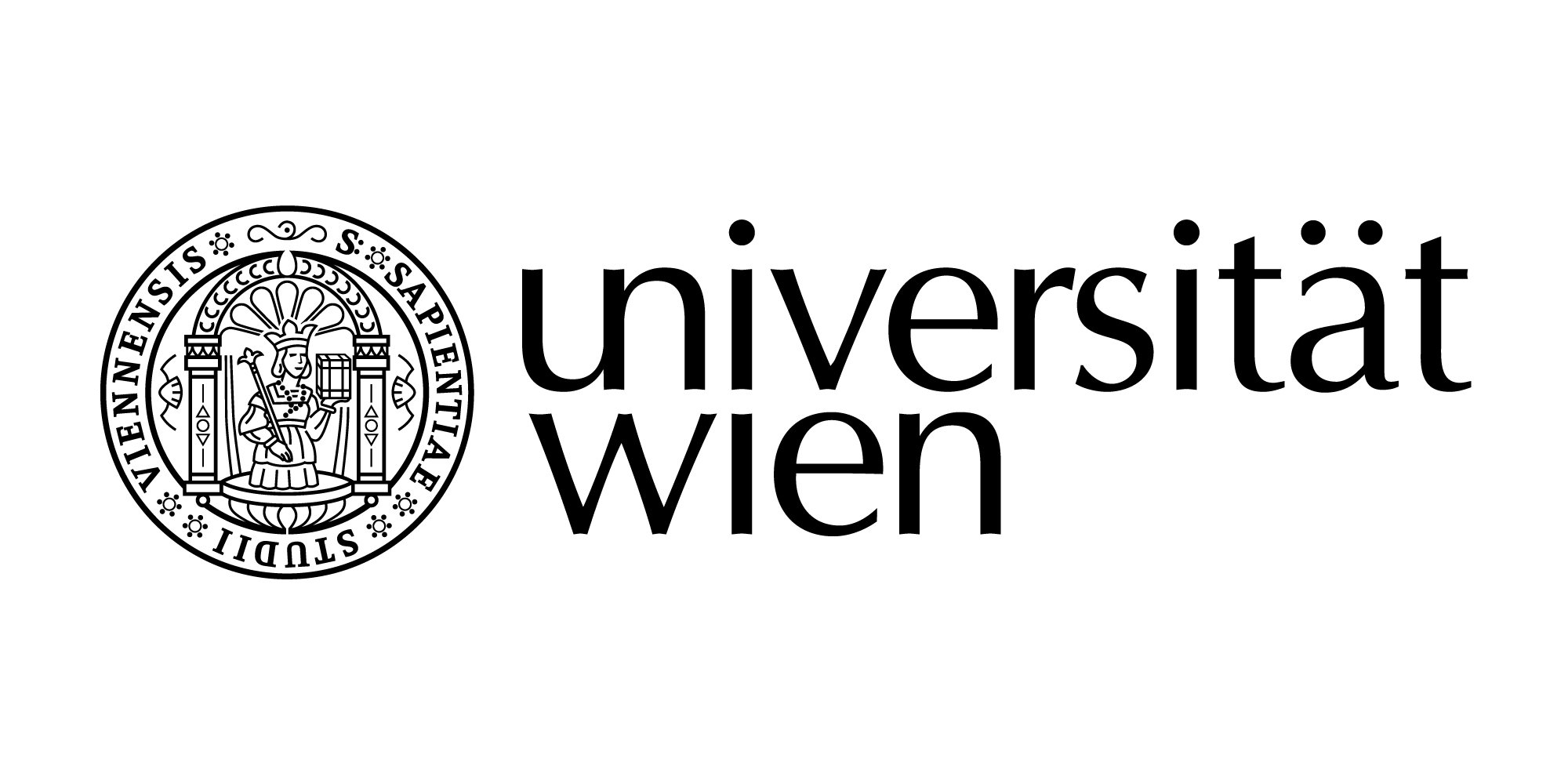
Armenia´s various dilemmas
Armenia – a relatively small country located in the South Caucasus – usually does not attract much media attention. But not so in the last months when the media reported on the current power struggle within the country. To understand the recent political developments, one has to take into account Armenia´s way from the breakdown of the Soviet Union onwards and its difficult political and economic situation.
What happened in Armenia?
Armenian citizens showed enormous activity during the last months. Because of the peacefulness of the protests, many experts speak of an Armenian “velvet revolution”[i]. The reason for the mass-protests in the Armenian capital Yerevan lies in general dissatisfaction with the government and growing corruption, clientelism and patronage. The main targets were the dominant and long reigning Republican Party of Armenia (RPA) and Serzh Sargsyan, who was president from 2008 until March 2018[ii]. The Kremlin strongly supported Sargsyan[iii]. In the eyes of the protesters, these actors are symbols of the rampant corrupt and oligarchic structures in the country.
It all started with the parliamentary elections at the beginning of April 2017[iv]. As it is not allowed to be president three times in a row, Serzh Sargsyan ran for the office of prime minister this time. His republican party won the elections and the parliament elected him into office. The opposition as well as international observers accused the government of electoral fraud. However, the constitutional amendment of 2015 entering into force in 2018 functioned as a catalyst for the recent mass protests. It shifts power from president to prime minister, leaving the former with merely representative functions. Needless to say, the amendment was pushed forward by Sargsyan himself. In April 2018, civil society began to successfully take action against the criticized power shift. After eight days of considerable mass protests, Sargsyan announced his resignation. With a narrow majority and after a first refusal, the parliament finally elected the head of the protests – opposition leader Nikol Pashinyan – as new prime minister. He now faces the challenge to introduce effective reforms. Armenia contends with an official unemployment rate of 18 percent and persistent emigration and brain drain. The Armenian diaspora is enormous: Approximately 8.000.000 Armenians are living around the world, while the country itself only has a population of about 3.000.000 people. Furthermore, 30 percent of the population are living under poverty level[v]. “Armenia now has an historic opportunity to restart its post-Soviet path, but sustainable development will not come easy”[vi]. Contemporary struggles have their roots in historical developments in the Caucasus region with long lasting impact.
Disillusioning transition era
Armenia and many other Newly Independent States were not prepared for the breakdown of the Soviet Union in 1991. Although the European Economic Community supported these states by initiating certain programs and providing financial support, the following years were characterized by conflicts as well as political and economic crisis in the whole region[vii].
The long-lasting Nagorny Karabakh conflict with Azerbaijan – which initially functioned as a catalyst for the democratization process in the late 1980s – ended up in an armed conflict which lasted until 1994. The frozen conflict not only periodically provokes tensions, but also led to the regional isolation of Armenia until today. The closed borders to Turkey and Azerbaijan obstructed trade, lowered economic growth, and resulted in a shortage of goods. To make matters worse, the lack of central control led to the development of a shadow economy and mafia networks[viii]. Cartels emerged and gradually gained (even political) influence. Introducing structural reforms and a macroeconomic stabilization program in the mid-1990s could not prevent Armenia from high unemployment rates, widespread poverty and growing inequalities. As a result, an enormous emigration wave took place.
During the transition years, the president increased his power, leading to authoritarian developments and an erosion of the initial democratization process. Tensions emerged not just between political institutions, but also between the political elite and the population. The recent protests illustrate that dissatisfaction with and skepticism towards political actors have not changed until today. Through those years, Armenia evolved into a political system characterized by oligarchic structures, interdependences between political and economic interests, widespread corruption, competitive authoritarianism, manipulated elections, the violation of the rule of law and a high public distrust in political elites and parties[ix]. These developments resulted in a profound internal political crisis. As a result, civic engagement increased in the last years.
Need of domestic reforms
The Armenian political elite became aware of the need to concentrate more on domestic reforms to ensure its survival. With the launch of the Eastern Partnership (EaP) in 2009 – a sub-project of the European Neighbourhood Policy (ENP)[1] – the EU offered an opportunity for Armenia to modernize and overcome its internal problems. Under the Eastern Partnership Armenia was able to modernize and get benefits without high burdens, as the costs of implementing EU policy were low. At the same time, the political elite could strengthen its legitimacy. However, “[…] Russia was not part of the EaP and even regarded the initiative as interference in its sphere of influence.”[x] This is important because Armenia continues to have a strong partnership with Russia and is highly dependent regarding key economic sectors, most notably the energy sector[xi]. Another substantial factor is the labor migration from Armenia to Russia, which is an important source of investment. Most importantly, Armenia needs Russia as a “security guarantor” – especially towards Azerbaijan.
Nevertheless, due to its internal crisis, Armenian political elite tried to pursue a double strategy: They continued the convergence towards Russia to ensure military assistance while at the same time implementing the domestic modernization process with EU backing. During 2010 and 2013, Armenia was amenable for EU policy and made considerable progress in important areas like anti-corruption and regulation and monitoring of state aid. As a highlight, Deep and Comprehensive Free Trade Area (DCFTA) negotiations started in March 2012[xii]. However, in 2013 – before a similar situation in the Ukraine took place, which triggered the Euromaidan – negotiations with the EU ended abruptly and Armenia decided to join the Russian-led Customs Union. The accession to the Eurasian Economic Union (EEU) – a counter integration project to the European Union which seeks for a convergence with China and the Asian region – followed in January 2015[xiii]. Both developments strengthened Russia´s strategic position in the South Caucasus, while at the same time evoking the concern of further delaying democratization in Armenia. Finally, the EU suspended its economic modernization program in Armenia arguing not to cooperate with a country that simultaneously participates in an alternative economic integration project. This case shows that Armenia and the Caucasus region remain contested between “the West” and “the East”. An intensified European policy in the Caucasus region could increase tensions between the EU and Russia[xiv]. Nevertheless, some experts argue that the countries will do well continuing their balancing act between the world powers in order to not disappear.
Vibrant civil society
Recent events in Armenia clearly illustrate that the region and its civil society are very vibrant. The courage of the Armenian people to persistently stand up for more democracy is remarkable and provides an important lesson for Western democracies. For the moment, we have to wait and see how the post-protest situation in Armenia will develop and how successful the new prime minister, Nikol Pashinyan, will be to introduce overdue reforms.
[1] For detailed information about the ENP and the EaP see Osipova, Svetlana (2010): The normative power of the EU in neighbourhood democratization within the framework of the ENP. A case study on Armenia. Linköping University: Master Thesis.
[i] Demytrie, Rayhan: Why Armenia ´Velvet Revolution´ won without a bullet fire. http://www.bbc.com/news/world-europe-43948181
[ii] Sommerbauer, Jutta: Armenien: Eriwan feiert Paschinjans Triumph. https://diepresse.com/home/ausland/aussenpolitik/5423636/Armenien_Eriwan-feiert-Paschinjans-Triumph
[iii] Zeit Online: Armenischer Ministerpräsident tritt nach Protesten zurück. https://www.zeit.de/politik/ausland/2018-04/sersch-sargsjan-ministerpraesident-ruecktritt-armenien
[iv] Zeit Online: Regierungspartei gewinnt Parlamentswahl. https://www.zeit.de/politik/ausland/2017-04/armenien-parlamentswahl-regierungspartei-sieg
[v] Zimmermann, Wolfgang: Armut und Korruption. Armenien verliert seine Zukunft. https://www.zdf.de/nachrichten/heute/armenien-verliert-seine-zukunft-100.html
[vi] Ishkanian, Armine: Armenia after the revolution: Opportunities and challenges. https://www.aljazeera.com/indepth/opinion/armenia-revolution-opportunities-challenges-180510071533024.html
[vii] Ghambaryan, Ani (2015): The Nagorny Karabakh Conflict and its Influence on the Human Rights Situation in Armenia. University of Vienna: Master Thesis.
[viii] Caspersen, Nina (2012): Regimes and peace processes: Democratic (non)development in Armenia and Azerbaijan and its impact on the Nagorno-Karabakh conflict. Communist and Post-Communist Studies, Vol. 45, pp.131-339.
[ix] BTI (2016): Armenia Country Report. Gütersloh: Bertelsmann Stiftung.
[x] Franco, Marc (2014): The European Union and its South and the East. In: Rehrl, Jochen (2014): Handbook for Decision Makers. The Common Security and Defence Policy of the European Union. Vienna: Armed Forces Printing Centre, p. 115
[xi] Benedikter, Christoph H. (2010): Stand und Perspektiven der Konfliktnachsorge der EU. Fallstudie Bergkarabach-Konflikt. Strategie und Sicherheit, Vol. 2010 (1), p. 325-338.
[xii] Delcour, Laure/ Wolczuk, Kataryna (2015): The EU´s Unexpected ´Ideal Neighbour´? The Perplexing Case of Armenia´s Europeanisation. Journal of European Integration, Vol. 37, No. 4, p. 491-507.
[xiii] Davydchyk, Maria/ Romanova, Ekaterina (2015): Eurasische Widersprüche. Die Eurasische Wirtschaftsunion zwischen Integration und Isolation. DGAPkompakt, Nr. 2, pp. 1-7.
[xiv] Halbach, Uwe (2009): Die Georgienkrise als weltpolitisches Thema. APuZ, Vol. 13, pp. 3-11.


